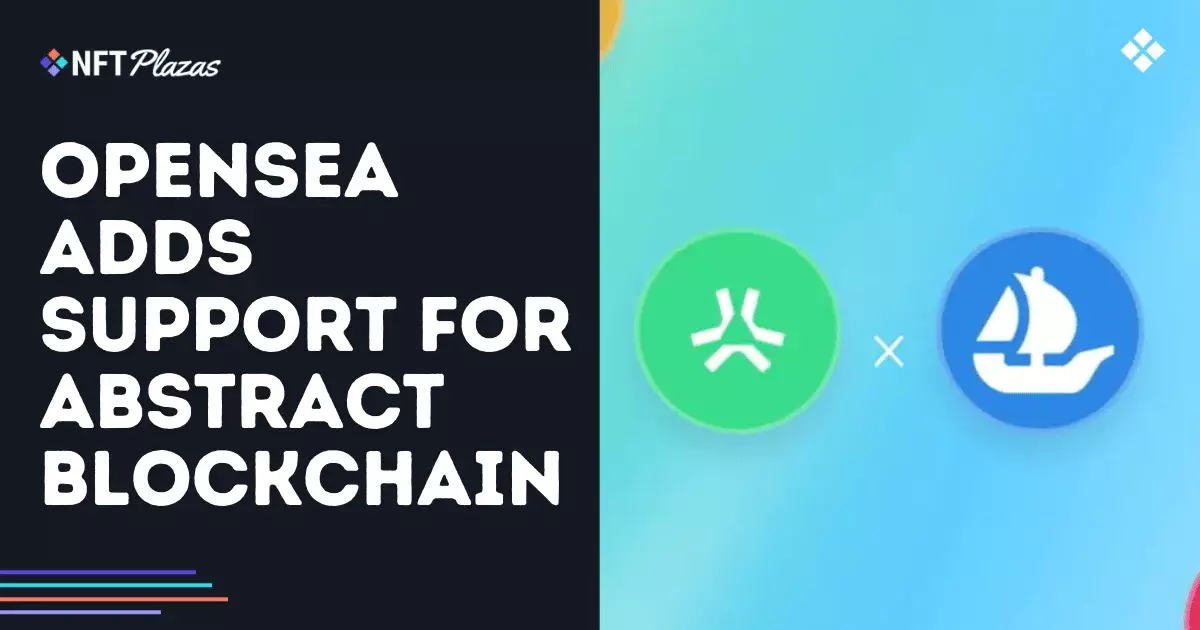In an electrifying move that could reshape the NFT landscape, OpenSea has officially welcomed the Abstract blockchain to its marketplace. This addition marks a pivotal moment not only for Abstract, but also for the NFT trading community as a whole. The implications of this integration extend well beyond mere trading updates; they signal a robust shift towards a multi-chain future that champions both innovation and accessibility. For those who may not recognize the significance of such a move, it’s essential to unpack the layers of advantages that come with this newfound partnership.
The Power of Layer 2 and ZK-Rollups
Let’s begin with the technical backbone of the Abstract blockchain, which utilizes zero-knowledge rollup (ZK-rollup) technology. This innovative approach offers impressive scalability while maintaining Ethereum’s renowned security, elevating the user experience significantly. For regular traders and avid NFT collectors, this is a game-changer. The network boasts the capability to execute transactions off-chain, resulting in lower fees and expedited confirmations—an essential requirement in today’s fast-paced digital economy. Users are growing increasingly frustrated with Ethereum’s congestion and substantial gas fees. By embracing Layer 2 solutions like Abstract, we are not just improving transaction speeds; we are also cultivating a more inclusive environment for creators and collectors alike.
Accessibility Meets Innovation with OpenSea
OpenSea’s addition of Abstract brings a total of 19 supported blockchains, furthering its reputation as a versatile hub for NFTs. This diverse roster allows users to experiment with various collections seamlessly. The beauty of OpenSea lies in its commitment to being the go-to marketplace for NFTs. However, with this inclusion, it effectively positions itself as a champion for innovation and accessibility by providing a more extensive platform for lesser-known projects. As a result, Ethereum-based projects gain visibility and might even find themselves gaining traction with audiences that previously overlooked them.
Transitioning Toward Consumer-Centric Models
Abstract’s architecture is meticulously designed to cater to consumer needs, which reflects a broader trend in the NFT industry favoring user-focused applications. By prioritizing scalability and affordability, Abstract distinguishes itself from countless other blockchain projects that can be overly complex or expensive to navigate. This consumer-first approach is not only refreshing but necessary for the mainstream adoption of NFTs.
Validation and Future Implications
The endorsement of Abstract by a heavy hitter like OpenSea cannot be underestimated. This partnership serves as validation for Abstract’s infrastructure, generating interest and encouraging more traders to explore its potential. As the number of NFT projects launching on Layer 2 networks grows, we can expect a ripple effect that challenges existing norms and motivates content creators to innovate further. The result will likely be a more democratized marketplace where creators can thrive irrespective of their initial investment.
In a world where digital assets are becoming increasingly mainstream, OpenSea’s move to incorporate Abstract may very well herald a paradigm shift for the NFT ecosystem. Highlighting the need for strong infrastructures, lower fees, and user-friendly environments, this strategic decision could ultimately benefit all stakeholders involved in the NFT space.

